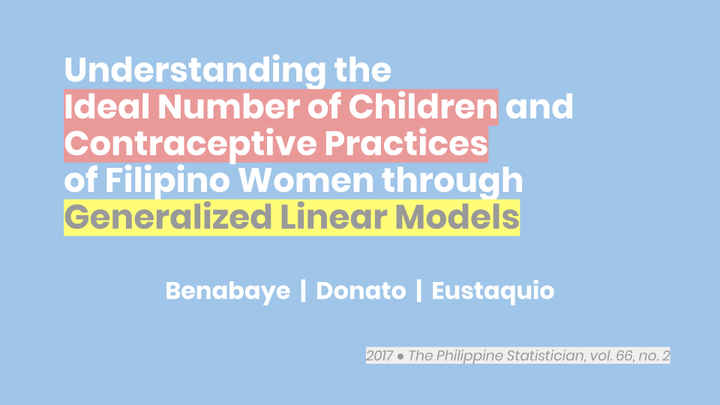
Abstract
In making and assessing family planning policies and programs, it is vital to investigate fertility preference as it does not only reveal a woman’s ideal number of children and the couple’s consensus on it, but also captures information on unwanted and mistimed pregnancies. The theoretical relationships of a woman’s ideal number of children with micro-level factors such as a woman’s experience with child mortality, her level of household authority, and household family planning awareness were examined under two cases. First, among women who have achieved their fertility preference, and secondly, among women who have not achieved their fertility preference. This study also examined the factors affecting the contraceptive behavior of women who have not achieved their fertility preference, specifically for a) contraceptive users, b) non-users who intend to use contraceptives later, and c) non-users with no intention to use. The difference in the behavior of factors influencing the ideal number of children between women who have and have not met their fertility preference showed that instead of factors related to family planning, the ideal number of children for women with unmet fertility preference is decreased by factors that suggest lack of women’s empowerment. On the other hand, analysis on contraceptive behavior found possible factors that can hinder the realization of women’s intention to practice contraception.
You can find my co-authors here: